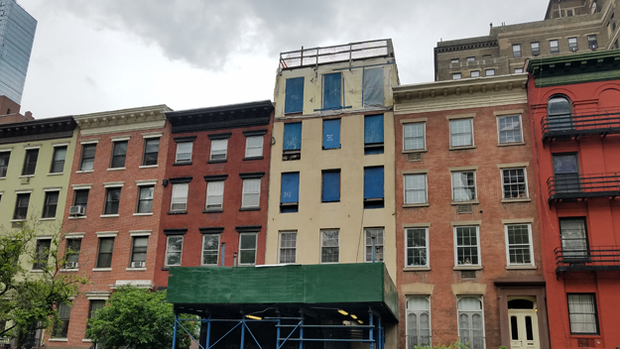Chelsea Neighbors Declare Victory In Fight To Preserve Manhattan's Last Underground Railroad Stop
NEW YORK (WCBS 880) -- On a quiet block of West 29th Street between 8th and 9th Avenues, one of the townhouses is not like the others.
Its face is beige stucco, not brick. Its windows are sealed with blue boards. Scaffolding looms over the sidewalk. And this house rises higher by a single, not-quite-finished, story. But hold that thought -- because to truly understand why it's not like the others, you have to go back to the days of the Civil War, WCBS 880's Alex Silverman reports.
"The Gibbons family provided shelter for slaves that were running away for their lives," said Fern Luskin, who teaches art and architecture at LaGuardia Community College and lives just down the block from Manhattan's last remaining link to the Underground Railroad. "The slaves were with them at their dining room table."
In the summer of 1863, New Yorkers rose up against the government's attempt to enforce the draft laws. The mob descended onto 29th Street, then known as Lamartine Place, with torches. They knew abolitionists lived there. Abigail Hopper Gibbons and her family managed to get up to the roof and across the adjoining buildings to safety.
"Their escape, over those rooftops, is precisely why this half of the block was landmarked," Luskin said.
So, back to that roof. About a decade ago, Luskin noticed the fifth story rising, obscuring the escape route. She and neighbor Julie Finch formed a group called Friends of the Hopper Gibbons House, and began to fight. Permits were revoked. Court rulings came down agains the developer, Tony Mamounas. Finally, this week, the Landmarks Preservation Commission ruled that the roof is integral to the house's story, and denied Mamounas's revised construction plan.
"The relationship of these buildings kept that aspect of its historical events alive," said Meenakshi Srinivasan, the commission chair. "That relationship speaks to events that are very unique to West 29th Street."
"It took long enough," said City Councilman Corey Johnson. "This was a complete and clear violation of what was allowed."
Mamounas, the developer, has not returned a call from WCBS 880.
An emergency order from the Department of Buildings requires him to tear the fifth floor down within sixty days, and restore the facade to its historical appearance. If Mamounas does not comply, a department spokesman said the city will hire a contractor to do it and send him the bill.
"And if he doesn't pay the bill, we'll put a lien on the building," said Johnson.
Preservationists see it as a strong signal that the city will listen to those who refuse to take its past for granted.
"It's a landmark decision," said Luskin. "And a victory for history."




